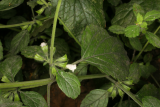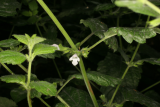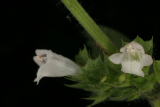Additional notes (click to expand)
Medicinal
Traditional Herbal Medicine Registration (THMR).
Medicinal uses
Uses supported by clinical data
Externally, for symptomatic treatment of herpes labialis (16–18).
Uses described in pharmacopoeias and in traditional systems
of medicine
Orally as a carminative for gastrointestinal disorders, and as a sedative for
treatment of nervous disturbances of sleep (5, 15).
Uses described in folk medicine, not supported by experimental
or clinical data
Treatment of amenorrhoea, asthma, bee stings, coughs, dizziness, dysmenorrhoea,
migraine headaches, tachycardia, toothache, tracheobronchitis
and urinary incontinence (6, 19).
Contraindications
External use: none. Internal use: see Precautions -
Precautions
Carcinogenesis, mutagenesis, impairment of fertility
A tincture of Folium Melissae was not mutagenic in vitro (31) and alcohol
extracts had antimutagenic activity in vitro (32).
Pregnancy: teratogenic effects
Internal use: no information available. Therefore, Folium Melissae should
not be administered internally during pregnancy without medical supervision.
Pregnancy: non-teratogenic effects
Internal use: no information available. Therefore, Folium Melissae should
not be administered internally during pregnancy without medical supervision.
Nursing mothers
Internal use: no information available. Therefore, Folium Melissae should
not be administered internally during lactation without medical supervision. Paediatric use
Internal use: no information available. Therefore, Folium Melissae
should not be administered internally to children without medical supervision.
WHO monographs on medicinal plants commonly used in the Newly Independent States (NIS). 2010. WHO, Geneva
Culpeper: ‘Melissa. Bawm. Outwardly, mixed with salt and applied to the neck helpeth the King’s Evil [=tuberculous infection of the lymph nodes in the neck], bitings of mad dogs, venomous beasts, and such as cannot hold their necks as they should do; inwardly it is an excellent remedy for a cold and moist stomach, cheers the heart, refresheth the mind, takes away grief, sorrow and care, instead of which it produces joy
and mirth.
Culpeper, Nicholas. (1650). A Physical Directory . London, Peter Cole.
Nomenclature
OTHER COMMON NAMES: BALM;BALM LEAF;BALM OIL PLANT;BARM LEAF;BEE BALM;DROPSYWORT;HONEY PLANT;PIMENTARY;SWEET BALM;SWEET MARY;TEA BALM
The Royal Horticultural Society Horticultural Database, available at www.rhs.org.uk
Bee Balm, Lemon Balm, Bawm
Other use
Research carried out by Dr Paul Chazot and colleagues at the School of Biological and Biomedical Sciences at Durham University suggest that essential oil of Lavandula angustifolia and Melissa officinalis may prove efficacious in reducing agitation in patients suffering from dementia.
Chazot et al, Pl . (2008). Pharmacological profile of an essential oil derived from Melissa officinalis with anti-agitation properties.
Notes: It is still used in pot-pourri and as a tea for persons with fevers. Culpeper (1650) said it cured the 'King’s Evil' a disease which was so called as it was supposed – until George II gave up the practice – to be cured by the touch of a King. There is a report of a king ‘touching’ 1,500 people in one day, and one might have thought they would have got together afterwards to see the results. In children the King’s Evil is usually caused by non-tuberculous mycobacterium, in adults by tuberculosis. It is rare to see it now as it is so readily cured with antibiotics.
Oakeley, Dr. H. F. (2013). The Gardens of the Pharmacopoeia Londinensis.
A lemon-flavoured tea can be made from the fresh or dried leaves. They are used mainly as a flavouring in salads and cooked foods.
Geographical distribution
- Africa, Macaronesia, Canary Is.
- Africa, Macaronesia, Madeira
- Africa, Northern Africa, Morocco
- Africa, Northern Africa, Tunisia
- Asia-Temperate, Caucasus
- Asia-Temperate, Middle Asia
- Asia-Temperate, Western Asia
- Asia-Temperate, Western Asia, Turkey
- Asia-Tropical, Indian Subcontinent, Pakistan
- Europe, Eastern Europe
- Europe, Southeastern Europe
- Europe, Southwestern Europe
Melissa officinalis L.
Family: LAMIACEAEGenus: Melissa
Species: officinalis L.
Common names: Lemon Balm
Pharmacopoeia Londinensis name: Melissa sive Melissophylulum
Distribution summary: S.Europe
Habit: Perennial
Hardiness: H4 - Hardy; average winter
Habitat: Scrub and waste land
Garden status: Currently grown
Garden location: Pharmacopoeia Londinensis 1618 'Leaves' (HSE 5)
Flowering months: June, July, August, September, October
Reason for growing: Medicinal, other use, traditional herbal registration
.JPG)



